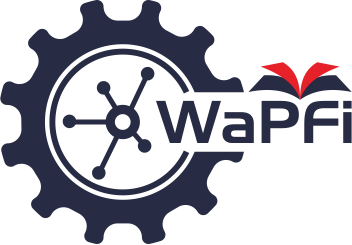Penerapan pembelajaran fisika berbasis STEM pada materi gelombang bunyi terhadap peningkatan keterampilan creative problem solving siswa SMA
Abstract
Currently, learning is not only focused on knowledge aspects but also includes various skills that must be mastered such as critical thinking, creative thinking, collaboration, and communication. The purpose of this research is to test the implementation of STEM-based physics learning on the topic of Sound Waves in improving students' creative problem solving skill (CPS), as well as analyzing students' creative thinking skills based on the design and products created. The data collection of students' CPS skills using a test technique consisting of descriptive questions that are adjusted to the CPS aspects and the improvement is analyzed with the N-gain value. For students' creative thinking skills in design and products, it is measured using indicators based on the four aspects of Torrance's creativity and then categorized based on the scores obtained. The research method used is quantitative with a one group pre-test-post-test design. The sample used consists of 31 eleventh-grade students from one senior high school in Cimahi. The results of data analysis show an increase in Students' CPS skills in the high, medium and low categories. The average score for students' creative thinking skills in design is 3.02 (75.50%) in the creative category, while the average score for students' creative thinking skills in products is 3.04 (76.00%) in the creative category. This indicates that the Implementation of STEM- based Physics Learning on the topic of Sound Waves can improve high school students' creative problem solving skills, and students' creative thinking skills based on design and products created in creative category.
Downloads
References
Amelia, K. (2017). Penerapan Pembelajaran IPA Berbasis STEM untuk Meningkatkan Keterampilan Berpikir Kreatif dalam Memecahkan Masalah Global Warming Siswa SMP (Skripsi). Fakultas Pendidikan Matematika dan Ilmu Pengetahuan Alam, Universitas Pendidikan Indonesia.
Arikunto, S. (2010). Prosedur Penelitian Suatu Pendekatan Praktik (Revisi 201). PT Rineka Cipta.
Bilal, A. A. (2012). The Effect of Using Brainstorming Strategy in Developing Creative Problem Solving Skills Among Female Students in Princess Alia University College. American International Journal of Contemporary Research, 2(10), 29-38.
Bybee, R. W. (2013). The Case for STEM Education-Challenges and Opportunities. Virginia: NSTA Press.
CEF. (2015). Creative Problem Solving Tools and Techniques resource Guide. Creative Problem Solving Institute.
Evans, J. S. (1991). Strategic Flexibility for High Technology Manoeuvres: A Conceptual Framework. Journal of Management Studies, 28(1), 69-89.
Gallant, D. J. (2010). Science, technology, engineering, and mathematics (STEM) education. McGraw-Hill Education. Retrieved from https://www.mheonline.com/glencoemath/pdf/stem_education.pdf.
Gok, T. (2010). The General Assessment of Problem Solving Processes and Metacognition in Physics Education. Eurasian Journal Of Physics and Chemistry Education: Journal of Physics, 2(2), 110-122.
Meltzer, D. E. (2002). The Relationship between Mathematics Preparation and Conceptual Learning Gains in Physics: A Possible "Hidden Variable" in Diagnostic Pretest Scores. American Journal of Physics, 70(12), 1259-1268. Retrieved from www.physics.iastate.edu/-per/doc/AJPDec-2002-Vol.70-1259-1268.pdf.
Nuraziza, R. (2018). Analisis Keterampilan Creative Problem Solving yang Dimiliki Siswa SMP Melalui Pembelajaran IPA Berbasis STEM. (Skripsi). Fakultas Pendidikan Matematika.
Amelia, R. N., & Kriswantoro. (2017). Implementasi Item Response Theory Sebagai Basis Analisis Kualitas Butir Soal dan Kemampuan Kimia Peserta didik Kota Yogyakarta. Jurnal Kimia dan Pendidikan Kimia, 2(1), 1-12.
Sumarwati, S., & Jailani, M. Y. (2013). Tahap Kreatif dalam Kalangan Pelajar Politeknik Metro, Politeknik Premier dan Konvensional di Malaysia. International Conference On Management, 212-234.
Suwarma, I. R. (2021). Mengenal Science, Technology, Engineering, dan Mathematics (STEM) dalam Pembelajaran di Sekolah Dasar dan Menengah UPI. Tidak Diterbitkan.
Torrance, E. P. (1988). The nature of creativity as manifest in its testing. In R. J. Sternberg (Ed.), The nature of creativity. New York: Cambridge University Press.
Wang, H. C., Chang, C. Y., & Li, T. Y. (2008). Understanding Individual Problem- Solving Style: A Key to learning and Applying Creative Problem Solving. Procedia Social and Behavioral Sciences.






